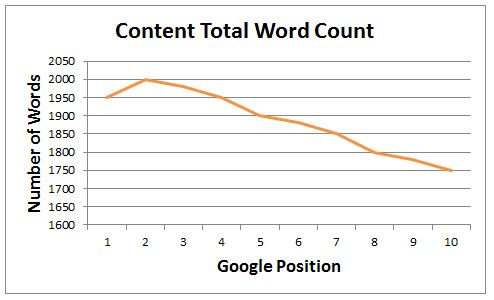SEO content writing. Whether it’s copy and images, PDFs, or whitepapers, it’s the one thing that all websites need in order to attract visitors. It’s also the one thing that everyone thinks they can do on their own. After all, how hard is it to write a few hundred words or load an image to your site?
The problem is, the internet isn’t a “Field of Dreams” and just because you build it, doesn’t mean they will come. Without understanding how to develop SEO content writing to best maximize search engine performance, who will know to ever read it, watch it, or download it?
While we can’t cover everything you need to know to be a content development expert (whole careers are built on this) these five simple tricks will help get you on your way to the top of the search engines.
#1 Plan Your Keyword or Phrase Before You Begin SEO Content Writing
All too often people sit down and start SEO content writing or designing a graphic before fully considering what keyword or phrase they are going to use to attract their audience. Worse yet, they think that slapping 20 keywords into a meta-tag will make up for it.
Clients are often surprised to find out that all the copy they wrote, infographics they built, etc. are targeted to a keyword with 5, 10, or 20 searches a month. Do your research ahead of time. Not only does this allow you to craft copy, title tags, alt tags, etc. to make best use of the keyword or phrase but it can give you powerful insight into how often the word comes up in search. Are 100 people searching for this a month or 100,000?
Sometimes there can be a huge difference in the way you describe your product or service, and how your customers describe it. You may write all your content based on “personal safety training” but if your customers are searching for “self-defense classes”, your site is not likely to come up for their searches, and you won’t get any of that valuable traffic. Instead, craft content that meets your customers where they are in the purchasing journey, and lead them to conversion with informative blogs, persuasive reviews and testimonials, and compelling case study examples.
It’s also important to make sure you’re looking at what keywords your competitors are ranking for. Find out which keywords they rank for but you don’t, and which keywords you rank for but they don’t. This information is one piece in helping you develop your game plan for reaching the top of the rankings. You also need to look at how relevant a chosen keyword is to your products and/or services, and what the intent of the searcher is if they are looking for that keyword. Learn more about the power of targeted keyword selection from our digital marketing webinar.
#2 Make Use of H1 Tags in Your SEO Content Writing
All SEO companies know that H1 tags are one of the easiest, most effective ways to let Google, Bing, and your readers know what the copy on the page is about. Think of it like a title to a book, the more engaging the title, the more likely people are to read it.
H1 tags are also one of the first places search engines look for keywords, and with a proper H1 tag you can ensure that search engines not only understand what the page is about, but also that the titles support the keyword or phrase of interest to your audience. Both Google and Microsoft Bing consider the lack of a relevant H1 tag as a major negative mark for SEO.
If H1 tags are the title of the book, then H2 tags are the chapter titles. Subheadings help to break up your content into readable chunks for your visitors, as well as containing all relevant information about an aspect of your overall topic into one area. These are also good places to use your secondary keywords that are still relevant, but perhaps less searched than your primary keyword.
Heading tags aren’t the only SEO content writing trick your page needs in order to rank highly, however. Proper on-page SEO shows Google what your page is about, so it can show your site to users when they search for your keywords. It’s important that all indicators on your page point to your primary keyword to rank highly. Read more about on-page SEO to make sure all your content is well-optimized for search engines.
#3 Always Name and Tag Images
It’s not uncommon to see images named “pageimage1.jpg” or “topimage2.gif”. Sure, if you are designing the page or site it might make things easier for you, but neither search engines nor people will understand what the image is about if they find the image on it’s own through an image search.
Google, Bing, and other search engines will index images making them available based on keyword search. If you have a great image for “Mom’s Tomato Soup” featured on the recipe page for “Mom’s Tomato Soup”, wouldn’t you want it to come up when someone searches for tomato soup recipes? By simply changing the name of the image from topimage2.gif to tomato-soup-recipe.gif, and adding an alt-text tag for “Mom’s Tomato Soup recipe” you’re helping to improve your overall SEO content writing.
Another important caveat about images is their size. Large images slow down your page and the search engines are not big fans of slow loading pages and sites. This disrupts the experience for the user and can cause them to leave within seconds. Google announced back in 2010 that site speed is a major ranking factor. Run a site speed test and if you don’t fare as well as you hoped, your first step should be to compress your images. Run the test again and you should see better results.
#4 Don’t Overoptimize Keywords
I know, I know – your recipe page for Mom’s Tomato Soup is so good, you want everyone to read it. So what do you do? You load up on keywords: tomato soup, soup, tomato soup recipe, soup recipe, recipe, tomato, etc.
Problem is, having multiple keywords like this is redundant. If you’re optimizing for “tomato soup recipe” then you are already optimized for all combinations of those three words, including “tomato soup” and “soup recipe”. By including too many keywords, search engines don’t really know what your page is about. Even worse, Google and Bing ignore keyword lists like this in favor of a singular keyword or phrase. What this really ensures is that you are focusing all your SEO content writing on a specific keyword or phrase so when people do find it, they really find what they are looking for. By providing searchers more specific responses to their query you’re helping provide quality content. The main purpose of all content should be to make users happy. When users are happy, Google is happy and when Google is happy with your content, they place you higher on the search engine results pages, which brings even more visitors to your site!
#5 Be Serious About What’s on the Page
This doesn’t mean your content has to be serious, but it does mean you should take it seriously. Do you have a page with only 15 words? That’s all you could say about the subject? You don’t even have any images, PDFs, or other content? If you aren’t serious about providing users with the content they want, then how can they take you seriously?
In a world where information is at our fingertips and there are 3.5 billion searches per day, if people can’t find what they want on your site they’ll just go elsewhere. Not only that, but Google and Bing consider copy volume a critical component to proper SEO content writing. Without enough quality content, the search engines won’t bother to rank your pages. The minimum number of words per page has changed drastically over time. Several years ago, 250 words was considered plenty of content. Just a couple years ago, 500 was considered the bare minimum. Lately, we’ve been seeing much better results with content that is 1,500 to 2,000 words long, and some of the highest ranking content is even 2,500 to 3,000 words long. The main idea behind such lengthy content is positioning yourself as an authority on the topic. Creating one page that covers all aspects of your primary keyword, with sections for your secondary keywords, is considered one of the best ways to get your pages ranking highly.
But how do you write quality content that also converts readers into customers? It’s not enough to just tell readers about your product or service. You want to compel them to not only purchase, but to purchase from you! Learn more about SEO copywriting and create the kind of content that your readers want and need. Quality content satisfies users, which in turn satisfies the search engines and therefore helps you rank higher.
BONUS Trick: Repurpose Old Content
Following the above tricks will lead you to create some great content for your site. You’ll be moving up in the search engine rankings, getting more traffic, and converting those visitors to customers. As with any great endeavor, over time, your traffic may begin to plateau or you don’t see quite as many visitors as you did when your highly-optimized content was first published. You worked hard and it’s still great content, but how can you revive it to inspire a new wave of visitors? Repurpose it!
- Create a PDF or white paper for users to download. People love getting valuable information for free. Showcase your knowledgeable content with a free downloadable to share with users and they will be more likely to return to your site in the future for more high-quality content.
- Turn it into a video for users to watch. Some people learn by reading, and some people learn by seeing. Turn your great content into a video that users can watch on your site. Hosting your videos on YouTube is another great way to help increase your rankings as well. Utilize YouTube SEO best practices to get your videos found in organic search results and widen your audience.
- Create a slide share. Turn your content into a slide show presentation and post it to your company’s LinkedIn page via SlideShare. Be sure to share the link across all your social media channels!
- Design an infographic to summarize the information and make your content more visually appealing. Infographics are easily shared on social media and help break up large sections of text to encourage your site’s visitors to keep reading.
- Start a newsletter for readers to subscribe to. Once you’ve got readers hooked with a great piece of content, encourage them to sign up for your newsletter with a compelling call-to-action. Send out a weekly recap of new content you’ve published, or give them content that’s exclusive to the newsletter and can’t be found anywhere else. People love feeling like they’re in on the secret.
Improve Your SEO Content Writing Now with AIS Media
Putting these SEO content writing tricks to use will provide you with a game plan for producing the kind of content that not only makes SEO easier, but provides a quality experience to your site viewers.
Looking to improve the quality of your blogs? Contact our skilled SEO content writing team by filling out our contact form, or giving us a call at 404.751.1043.





